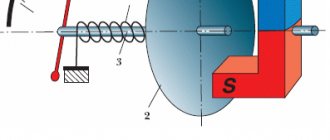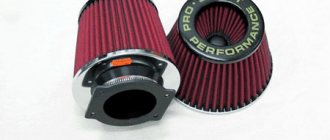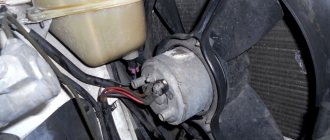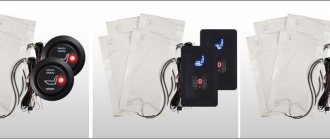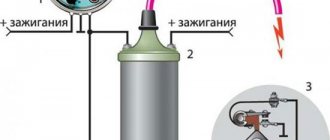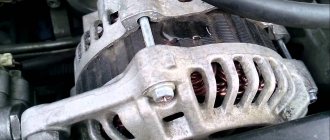A tachometer is considered a useful device for a car, since it records the revolutions made by the crankshaft. Many car owners often install it on carburetor VAZ-2105 cars, because these elements are not provided by the manufacturer.
They are especially necessary for novice drivers who cannot track the operation of the engine only by its sounds.
And in order to prevent serious breakdowns and malfunctions, you should install a tachometer on the VAZ model 2105. But first you should consider the features of this device.
Installation Features
As noted above, owners of the VAZ-2105 are recommended to replace the instrument panel with the one that was mounted on the 2107. If you do not want to do this, then a remote option is selected.
It is fixed either on the bracket supplied in the kit or in a special frame-pocket - those are sold separately. For the 2105 model, the tachometer designed for the VAZ-2106 is perfect. To connect it, you will have to cut off the connector with contacts, since there is nowhere to plug it into the “five”. Further switching is done by extending the wires and connecting them with terminal strips (sold in electrical goods stores). It is important to consider the following:
- one cable (marked with brown insulation) is attached to the plus of the ignition coil;
- black and white goes to mass;
- orange (sometimes yellow) connects to battery positive.
The electronic tachometer is installed in the same way.
Installation on a car with a carburetor
Before connecting the tachometer, it must be installed in the location chosen for it.
This way you can immediately see how long of wire you will need. Then the negative cable is connected to ground. It is, as previously reported, black and white or completely charcoal. Connect the brown or red wire to the ignition switch contact. Look at the diagram where the positive from the battery comes. If it is not there, then find it using a tester. This is done like this:
- set the multimeter to 20 V;
- Place the black probe on ground;
- Touch all the contacts in red one by one - the one you are looking for will have 12 volts.
The last posting is used to obtain data on the number of crankshaft revolutions 2105. Its color is not defined, each manufacturer uses its own. This cable in the contact ignition system goes to the distributor breaker. Otherwise, it is connected directly to the voltage switch. If the tachometer has its own backlight, then it is additionally connected to the car’s side lights circuit.
Welcome to VAZ.EE+ Extended Edition
Design, principle of operation, repair and replacement of the tachometer of the VAZ 2106
Since May 2013, our portal has expanded the thematic sections of the forum for the exchange of experience: subforums have been added: Americans, Koreans, Germans, French, Japanese, due to the increase in the fleets of our visitors.
In addition to changing the style, our Chat, Mail, Entertainment and photo/video sections, Literature have become built-in and do not require separate registration. In addition, there are other useful and pleasant innovations that you can all familiarize yourself with when visiting the portal.
You can contact the administration with questions and suggestions in a special section of the forum or through the feedback form.
Why
Step-by-step connection of a tachometer on a VAZ 2109: diagram, video
The tachometer is not one of the “vital” devices of the “seven”, but its malfunction causes certain inconvenience. In addition, the situation when the VAZ 2107 tachometer jumps is a sign of problems in the ignition system or fuel supply to the engine. Therefore, at the first sign of a malfunctioning tachometer, you need to understand the causes of the breakdown and eliminate them immediately.
The connection diagram for the tachometer on a VAZ 2107 with a carburetor engine is slightly different from that used on models with an injector. But in general, the causes of the malfunction and the methods for eliminating them are similar.
Connecting a tachometer on carburetor and injection models
The connection diagram for the VAZ 2107 tachometer on an injection machine differs in that in this case the device reads data on engine speed not from the ignition coil, but from the engine ECU. In general, the connection procedure and operating principle are no different. The device has three terminals, two of which are connected to the “plus” from the ignition switch and “ground”, and to the third - a wire from the ignition coil or engine ECU.
Where to start troubleshooting
To troubleshoot, you will need a multimeter or “tester”. If the tachometer on a VAZ 2107 (injector) does not work, you should first look to see if the “Check Engine” warning light is on. If this is the case, then you can find out the cause of the breakdown by reading the error code from the controller. If the lamp does not light, you can skip this point.
Next, on the injection and carburetor models, you should check the condition of the electrical wiring going to the tachometer. The insulation of the wires must not be damaged, the tachometer must have good contact with ground, power and terminal “K” of the ignition coil or the engine ECU output. In addition, there may be a break or poor contact inside the device itself. In this case, it will have to be replaced.
If everything is in order with the wires and contacts, the problem is in the Hall sensor (on the injection “seven”), the ignition or fuel supply system.
Checking the ignition system
The VAZ 2107 tachometer circuit is the same for all models, the only difference is where it gets the data from. In the carburetor “seven”, information about engine speed is read from the ignition coil: every two spark discharges on the spark plugs is one engine revolution.
The tachometer may malfunction if the insulation of high-voltage wires is broken or the ignition coil is faulty. In this case, interruptions in engine operation and “floating” speed are also possible. In addition to the wires and coil, it is necessary to check the condition and adjustment of the breaker contact and the capacitance of the capacitor on it.
Faulty wires and, as a result, unstable engine operation, cause the tachometer to “jump” on injection VAZ models.
Hall Sensor
The tachometer on the VAZ 2107 (injector) reads information about engine speed from the computer. The latter, in turn, receives data from the Hall sensor. Poor contact at the sensor terminals or its malfunction leads to interruptions in engine operation and fluctuations in the tachometer needle. If the contacts can be cleaned, the sensor itself cannot be repaired. It is designed in such a way that the possibility of its repair is excluded. The faulty sensor must be replaced with a new one.
Fuel system malfunction
The cause of interruptions in engine operation and jumps in the tachometer needle can be either low-quality fuel or problems in the injection system. On carburetor models, disassemble the carburetor and clean the jets.
Most often, a “jumping” tachometer is the result of a clogged idle jet. The VAZ 2107 tachometer (injector) can “jump” if there are problems in the injection system. In this case, it is necessary to flush the injectors.
To check and clean the injection system, you need a special stand and equipment. It is better to entrust such work to service station specialists.
Malfunction of the gas distribution mechanism
When the tachometer needle begins to “jump” at high speeds, the problem may be associated with a malfunctioning gas distribution mechanism. In this case, it is necessary to check the tension of the timing belt connecting the crankshaft to the camshaft.
In addition, the speed may “float” due to a malfunction of the engine itself. Here it is worth checking the compression in the cylinders or contacting an auto mechanic.
If you delay diagnosis and repair, serious damage to the piston system may occur, which will require expensive complex repairs.
https://youtube.com/watch?v=%250Ahttps%3A
Comments
good idea
It turned out so well, I didn’t have enough tach in my five. But in the beard, where the instruments stand, put some kind of solid plate so that the plugs are not visible. And so-zer good!
- Login to leave comments
good idea
I did the same for myself, only I cut out a solid plate into my beard, and now no plugs or other crap are visible there
